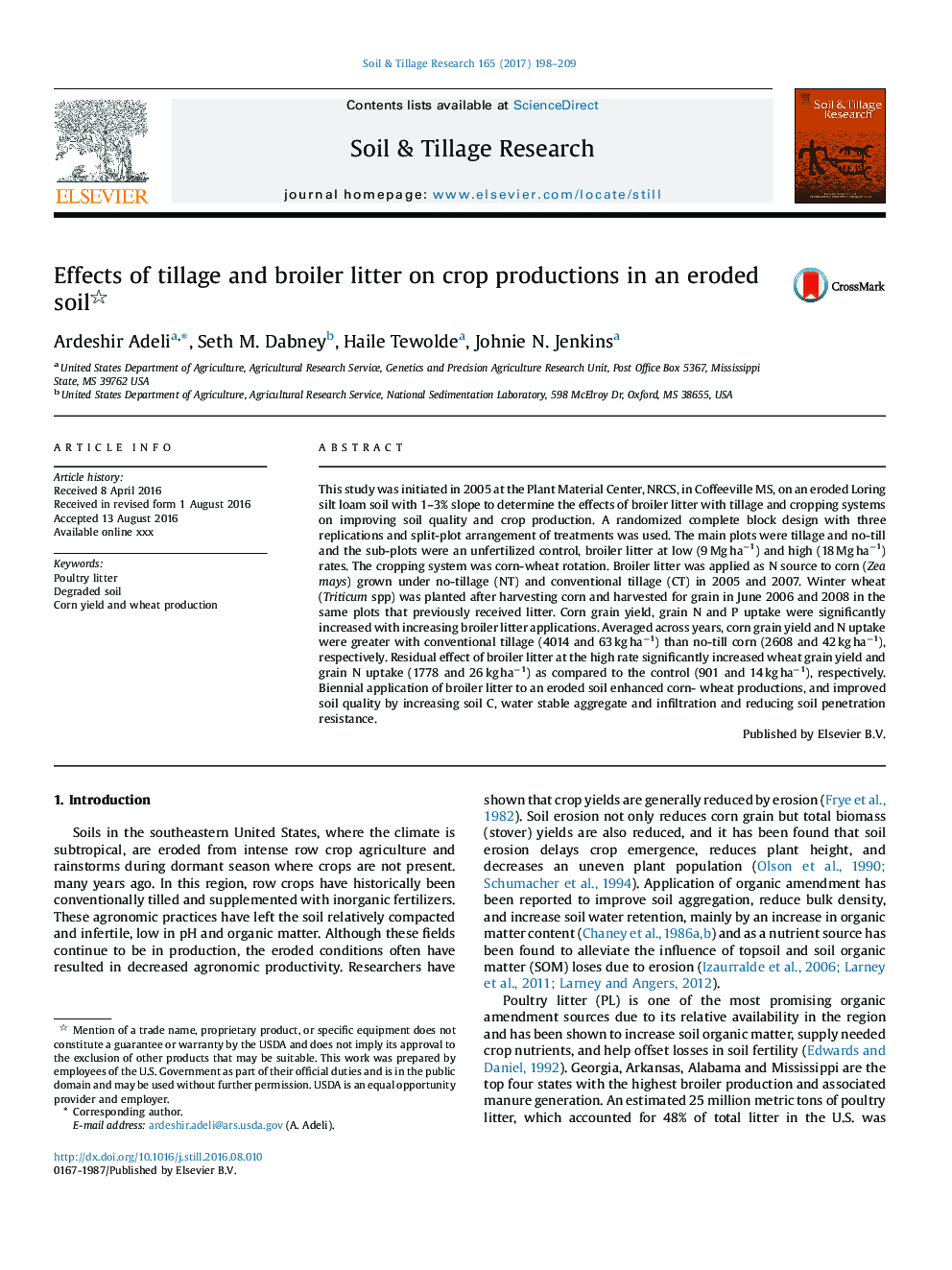| Article ID | Journal | Published Year | Pages | File Type |
|---|---|---|---|---|
| 6773315 | Soil and Tillage Research | 2017 | 12 Pages |
Abstract
This study was initiated in 2005 at the Plant Material Center, NRCS, in Coffeeville MS, on an eroded Loring silt loam soil with 1⿿3% slope to determine the effects of broiler litter with tillage and cropping systems on improving soil quality and crop production. A randomized complete block design with three replications and split-plot arrangement of treatments was used. The main plots were tillage and no-till and the sub-plots were an unfertilized control, broiler litter at low (9 Mg ha⿿1) and high (18 Mg ha⿿1) rates. The cropping system was corn-wheat rotation. Broiler litter was applied as N source to corn (Zea mays) grown under no-tillage (NT) and conventional tillage (CT) in 2005 and 2007. Winter wheat (Triticum spp) was planted after harvesting corn and harvested for grain in June 2006 and 2008 in the same plots that previously received litter. Corn grain yield, grain N and P uptake were significantly increased with increasing broiler litter applications. Averaged across years, corn grain yield and N uptake were greater with conventional tillage (4014 and 63 kg ha⿿1) than no-till corn (2608 and 42 kg ha⿿1), respectively. Residual effect of broiler litter at the high rate significantly increased wheat grain yield and grain N uptake (1778 and 26 kg ha⿿1) as compared to the control (901 and 14 kg ha⿿1), respectively. Biennial application of broiler litter to an eroded soil enhanced corn- wheat productions, and improved soil quality by increasing soil C, water stable aggregate and infiltration and reducing soil penetration resistance.
Keywords
Related Topics
Physical Sciences and Engineering
Energy
Renewable Energy, Sustainability and the Environment
Authors
Ardeshir Adeli, Seth M. Dabney, Haile Tewolde, Johnie N. Jenkins,
